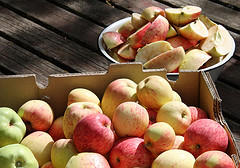If you love to cook, you know how important it is to use the proper cutting techniques in every recipe. Many people don't know the proper names of these techniques, however, which often leads to using the wrong one. Here are three important types of cutting that are essential for everything from entrees to desserts.
- Julienne. To julienne, you want to cut vegetables or other food items into stick-shaped pieces that are long and thin. Start by cutting the item into a square, then slice it into rectangular-shaped pieces lengthwise. Repeat the same step on each of the rectangles until you're left with pieces that resemble matchsticks.
- Chiffonade. This type of cut sounds fancy, but it actually just refers to cutting herbs or thin leaf vegetables. Roll the herbs up into a tight tube, then roughly chop across with a sharp knife. It doesn't matter how the cuts look, just that the pieces are small enough to sprinkle throughout a dish.
- Dice. Dicing is similar to chopping, but it creates entirely uniform pieces for dishes like stews or fruit salads. Begin with a rectangular shape and continue to cut it both directions until you're left with uniform pieces in the size that you desire.
Knife Skills: Different Types of Cuts [The Culinary Cook]
Top 10 Knife Skills [How Stuff Works]
Perfect Your Knife Skills With This Chef's Guide to Knives [Lifehacker]










 Equal Housing Opportunity
Equal Housing Opportunity